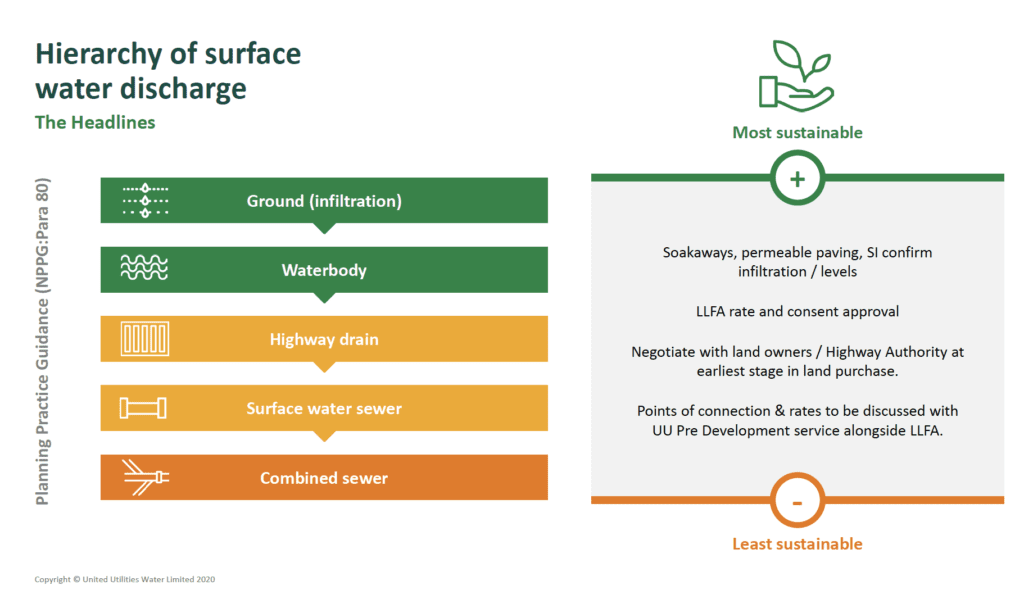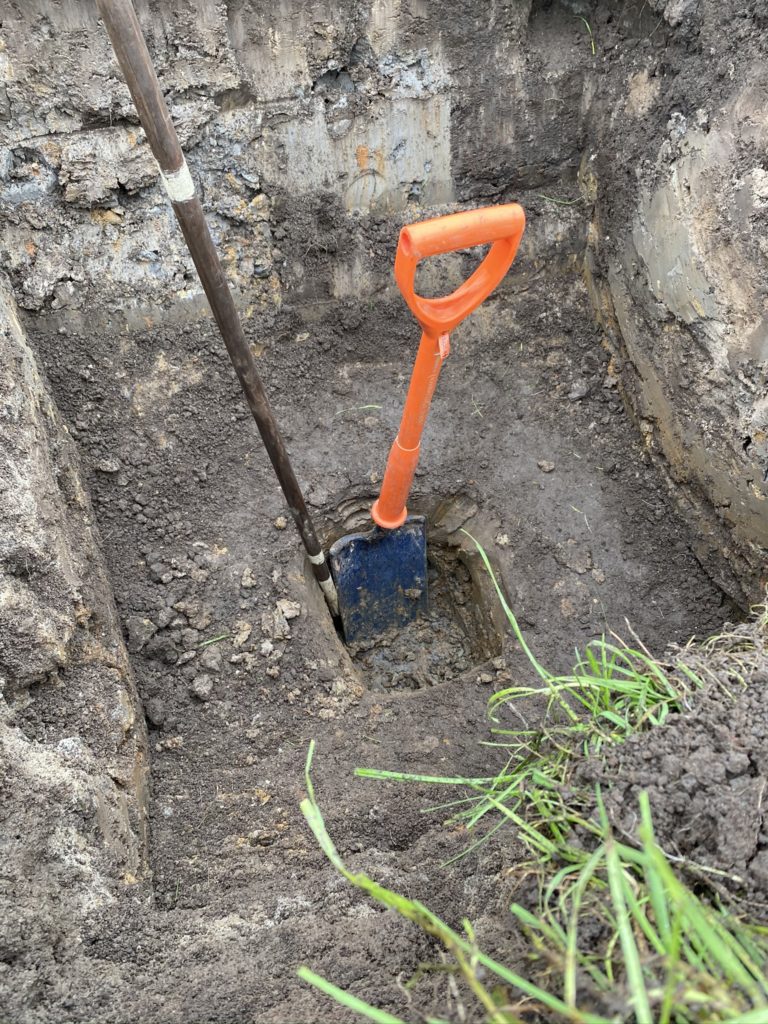Drain Alert carry out soakaway tests and peroclation tests to determine whether ground is suitable for either a sceptic tank or a soakaway. Soakaway tests are typically used to during planning and development, storing the immediate surface water run-off in anatural drainage system allowing natural dissipation and attenuation.

Surface water run-off from buildings and paved areas was traditionally disposed of through public sewers or into a watercourse. However, the traditional piped approach to draining sites is being replaced where possible, by a Sustainable Urban Drainage System (SUDS) to mimic natural drainage. The use of natural surface water drainage works limits the impact on the discharge of new upstream building works and avoids the cost of upgrading the sewer system.
Soakaways are not only more sustainable for the environment, but the overall cost of Soakaways is low compared with conventional drainage systems and enables storm water to be dealt with at the source rather than being diverted directly into the sewer system.
Percolation Tests and Soakaways are part of the design process and therefore should be carried out as part of the prior to any design or construction work taking place.
Drain Alert will carry out a BRE Digest 365 Soakaway Test (Trial Pit), this is the most common and widely accepted method of performing a soakaway test. Using an excavator, we excavate a trial pit to represent the soakaway. We then calculate the time it takes for the water level to drop from 75% to 25%; this gives us the soil infiltration rate (m/sec) enabling a soakaway to be designed.
